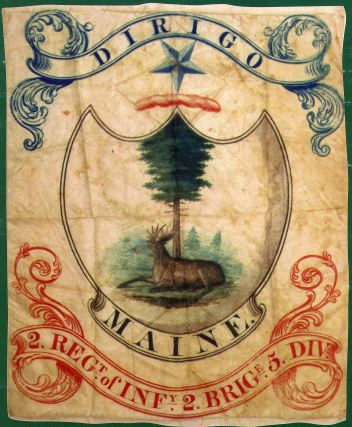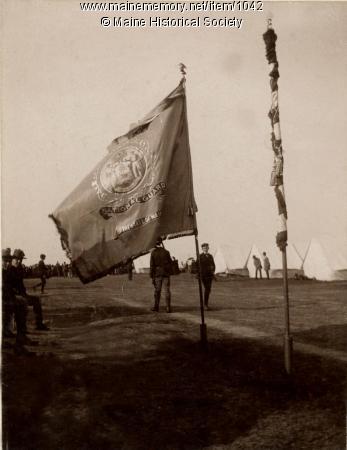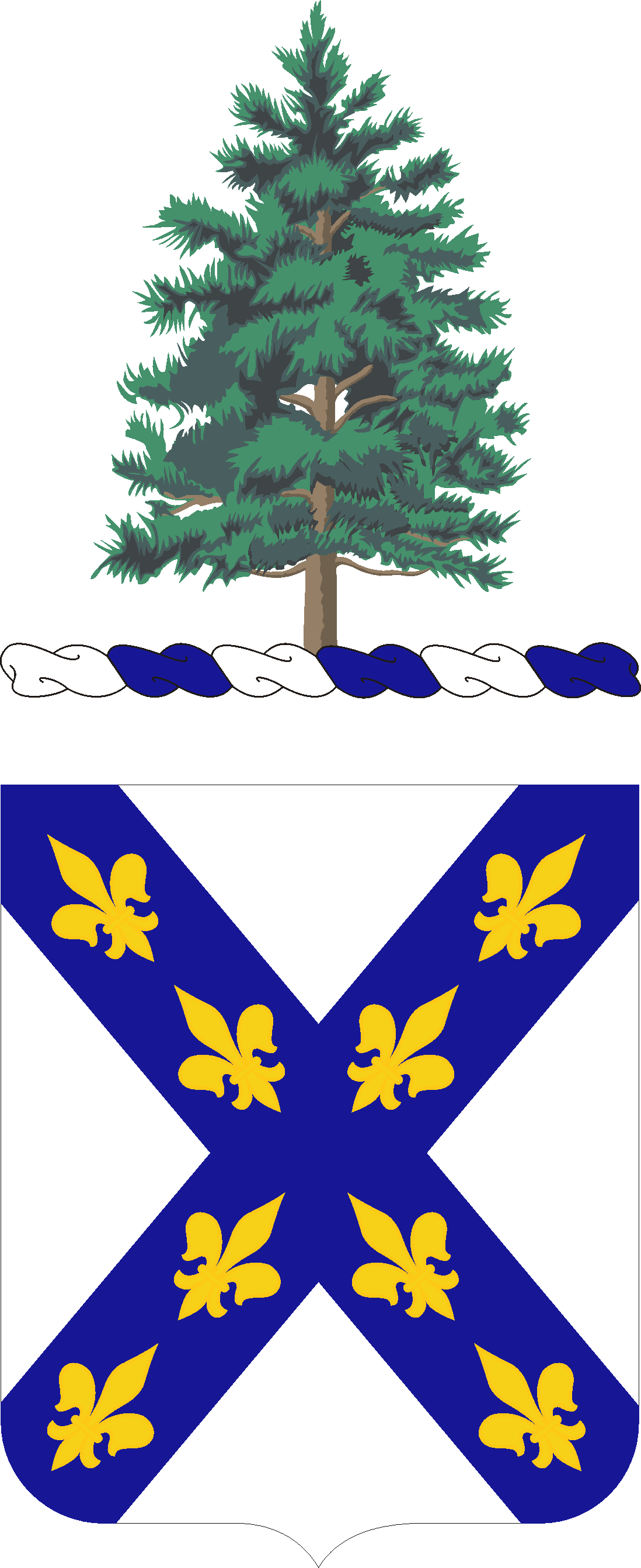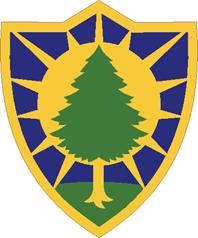Maine Army National Guard Shoulder Sleeve Insignia
The distinctive pine tree shoulder patch worn by the Soldiers of the Maine Army National Guard has a rich heritage in the state's military history.
At the beginning of the American Revolution, Maine provided one regiment each from Cumberland and York counties, which marched to Boston following the news of Lexington and Concord. They served as part of the Massachusetts contingent, as the 31st and 30th Massachusetts Regiments of Foot, respectively, in 1775 during the siege of Boston. William Moody, a soldier in Captain Bradish’s Portland Company in the 31st Regiment noted on July 18, 1775 that the regiment was read the “Declaration of the Causes and Necessity of Taking Up Arms,” from the Second Continental Congress. The regiment was then presented with its standard, bearing the inscription “An Appeal to Heaven.” Although the author does not include more in its description, surviving examples of this “Appeal to Heaven” flag include the white pine tree below the inscription. Thus, the first of Maine’s military contributions to the fledgling United States fought their first battles under the white pine.

Following statehood in 1820, the Maine Militia – now separate from Massachusetts – needed its own flag for the regiments organized around the state. The image chosen was that of the Maine coat of arms – a white pine tree with a recumbent moose underneath. These were flown by the regiments of the Maine Militia until the Civil War, and were the colors that Maine regiments marched under during the bloodless “Aroostook War” of 1838-39.

During the U.S. Civil War, Maine supplied thirty-two regiments of infantry, two regiments of cavalry, and six batteries of artillery to the U.S. Army. The regiments bore two colors: the National – the U.S. flag – and the State. Most often, the latter consisted of the Federal crest: the eagle grasping the arrows of war and the palms of peace bearing the shield of the Republic, with the regiment’s name underneath. However, some regiments carried ceremonial State standards that bore the State seal with the white pine on them, emblazoned with the regiment’s battle honors.
Following the Civil War, the Maine Volunteer Militia was reorganized in 1869. In 1873, the companies were organized into the 1st Regiment of Infantry, with the 2nd Regiment added in 1880. The designation was changed to the National Guard of the State of Maine in 1893. When the 1st Regiment mustered for the Spanish-American War in 1898, they did so under the regimental colors bearing the Maine State Seal on a field of blue, with “National Guard” and “First Infantry” emblazoned below. Once again, the white pine tree remained the central feature of the connection between the State and her military forces. It was this flag that would be adopted by the Legislature as the State Flag in 1909.

At the outset of World War I, the Army decided to end the traditional designation of National Guard regiments by their state names. Thus, the 2nd Regiment of Infantry, Maine National Guard, became the 103rd U.S. Infantry Regiment, part of the 26th “Yankee” Division. The 103rd Infantry fought on the Western Front from February to November of 1918, taking part in the major campaigns of the U.S. Army. On the shattered fields of France, the soldiers of the regiment yearned for the timbered landscapes of their home state and began to mark their equipment with a white pine tree. Each unit in the Yankee Division was soon given permission to develop their own distinctive unit insignia – and the white pine tree became that of the 103rd Infantry. After the Armistice, the men of the regiment painted the insignia on their helmets as a point of pride.

In 1924, the regiments of the Maine Army National Guard were given unit crests by the War Department. The three regiments of the State – the 103rd Infantry, the 152nd Field Artillery, and the 240th Coast Artillery – received crests with the joining feature being the pine tree on top of each crest.

During World War II, the Maine State Guard was formed under the office of the Adjutant General to take over the state role of the Maine National Guard which was all on Federal service. The patch for the State Guard consisted of a green pine tree on a blue background with the letters “M.S.G.” around it.
Following the Second World War, the Maine National Guard was reorganized again in 1949. This time, the Maine Army National Guard was given a distinctive shoulder sleeve insignia – a patch to be worn on the shoulder of the uniform: “On a blue shield 2 ½ inches in width by 3 inches in height with 1/8 inch yellow border a green pine tree with yellow trunk silhouetted against a yellow sun with pointed rays and issuing from a green mound.” The pine tree was given pride of place once again, as “historically the central figure of the State of Maine seal and illustrative of Maine as ‘The Pine Tree State.’” This is the patch still worn by members of the Maine Army National Guard in all their missions around the world and serves as a reminder of Maine’s proud military heritage.
